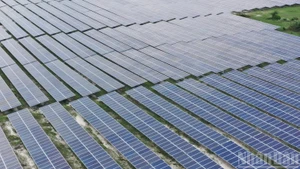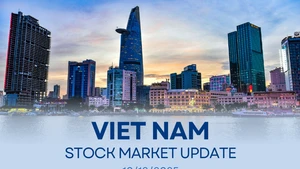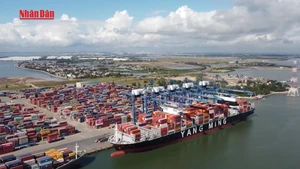Recently, the Prime Minister approved a decision on the planning of Kien Giang province in the 2021-2030 period, with a vision to 2050, in which Kien Giang will strive to become a strong marine economic centre of the country.
According to Vice Chairman of the provincial People's Committee Le Quoc Anh, the province, which boasts over 140 islands, and a fishing area of more than 63,200 sq.km, holds a key position for fisheries in the Mekong Delta and the whole country, and has great potential to develop the marine economy.
With numerous high-value aquatic species, Kien Giang determined that the marine economy will be the main development orientation, with focus on effective and sustainable development of marine aquaculture in an industrial, modern direction, said Anh.
Like Kien Giang, the southernmost province of Ca Mau is also aiming to be a key marine economic development locality.
Le Van Su, Vice Chairman of the provincial People's Committee, said that the province strives to build modern and smart fisheries, agriculture and forestry, and develop production links following the organic eco-agricultural value chain.
Attention will be paid to developing high-tech, effective and sustainable marine farming, applying science, technology and innovation in post-harvest preservation and deep processing to increase the added value of seafood.
In addition, Ca Mau has a strategy to protect resources and the ecological environment, and firmly ensure national defence, security and sovereignty over the country’s sea and islands. It is also focused on sustainable development and management of the marine economy in an integrated and interdisciplinary manner with the engagement of the residential and business communities.
Meanwhile, the southern province of Ba Ria-Vung Tau has formed a seaport system classified as special national ports. The locality boasts Cai Mep Thi Vai - one of the 20 deep-water ports with the biggest exploitation potential in the world. The port is capable of receiving ships of more than 200,000 tonnes, making it convenient for Ba Ria-Vung Tau to develop maritime transport in the region in particular and Vietnamese logistics in general.
According to the provincial People's Committee, to take advantage of and promote efficiency of the seaport system, the province has also planned and built a system of industrial parks linked with seaports. To date, it has 15 industrial parks with a total area of about 8,510 hectares.
Secretary of Kien Giang’s Party Committee Do Thanh Binh said that the province currently has favourable policies to develop the province’s waters, islands and coastal areas so as to become a key economic zone with seaports of international scale to facilitate trade with regional and international partners.
At the same time, it will apply preferential mechanisms and policies related to foreign and domestic investments in Phu Quoc – its most famous island.
To date, Phu Quoc has attracted 286 investment projects worth over 375 trillion VND (14.7 billion USD) in total. Of them, 47 have been put into operation, and construction is underway on 78 others.
















